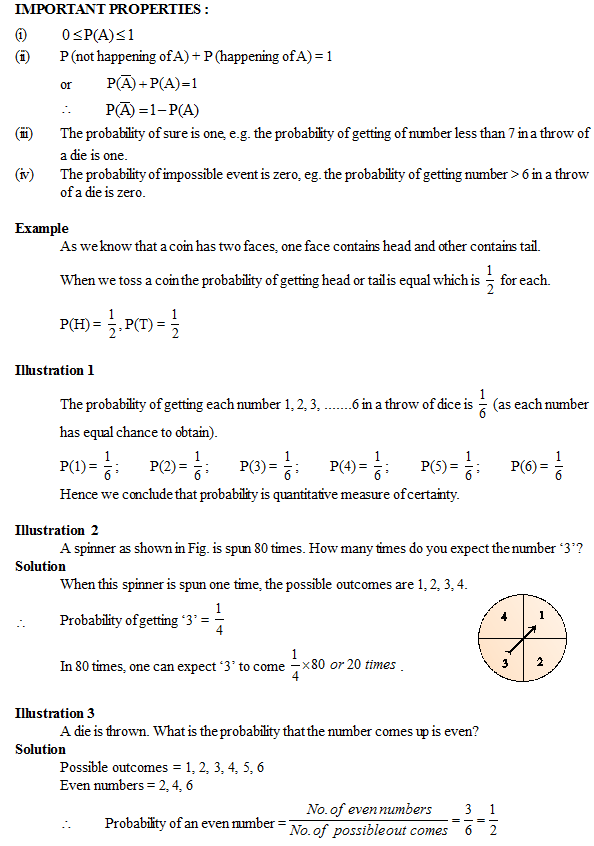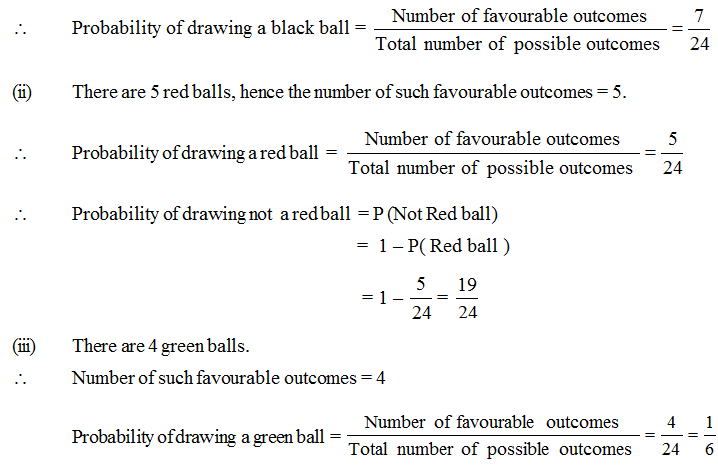Introduction
- Books Name
- CBSE Class 7 Mathematics Book
- Publication
- Param Publication
- Course
- CBSE Class 7
- Subject
- Mathmatics
Introduction
In everyday life we come across statements such as:
(i) There is a change that it will rain today.
(ii) I doubt that India will won the match today.
The words chance, doubt are the words which show uncertainity of happening or not happening of an event which is in mathematical language is called Probability.
Note: Probability tells us how likely an event is to occur.
Some terms related to Probability
1. Experiment : An operation which can produce some well defined outcomes, is called an experiment.
2. Event : Each outcomes in an experiment is called an event.
3. Random experiment: An experiment in which all possible outcomes are known and the exact outcome cannot be predicted in advance, is called a random experiment.
4. Trial: By a trial, we mean performing a random experiment.
Some eg. of experiment:
(a) Throwing a coin. (b) Throwing two coins
(c) Throwing a dice. (d) Drawing cards from pack etc.
5. Sample Space : The collection of all possible outcomes of a random experiment is called a sample space associated with it and is generally denoted by S. For example, When a die is thrown then S = { 1, 2, 3, 4, 5, 6 }.
6. Favourable Event : Let S be a sample space associated with a random experiment and A be an event associated with the random experiment. The elementary events belonging to A are known as favourable events to the event A.
For example : In throwing a pair of dice, A is defined by “Getting 8 as the sum”. Then following elementary event has : (2, 6), (3, 5), (4, 4), (5, 3), (6, 2) as favourable outcomes.
Probability and Important Properties
- Books Name
- CBSE Class 7 Mathematics Book
- Publication
- Param Publication
- Course
- CBSE Class 7
- Subject
- Mathmatics


Illustration 4
A bag contains 5 red balls, 8 white balls, 4 green balls and 7 black balls. If one ball is drawn at random, find the probability that it is :
(i) Black (ii) Not red (iii) Green
Solution
Number of red balls in the bag = 5
Number of white balls in the bag = 8
Number of green balls in the bag = 4
Number of black balls in the bag = 7
∴ Total number of balls in the bag = 5 + 8 + 4 + 7 = 24.
Drawing balls randomly are equally likely outcomes.
∴ Total number of possible outcomes = 24
Now,
(i) There are 7 black balls, hence the number of such favourable outcomes = 7


 Param Publication
Param Publication
